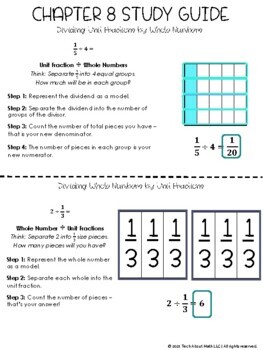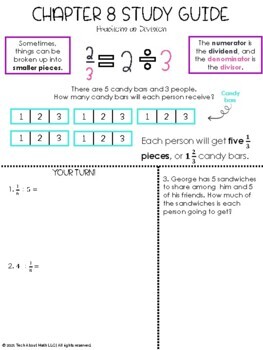Go Math Aligned Grade 5 Chapter 8 Study Guide: Dividing Fractions
- PDF
Also included in
- Post these Google Slide study guides on your Google Classroom before any GO Math assessment and your students and parents will thank you! Your students will learn the conceptual understanding of whole numbers, decimals, fractions, and geometry. These study guides include visuals, step by step directPrice $34.65Original Price $38.50Save $3.85
Description
Have you been looking for a way to encourage students to study and to give parents the opportunity to help their child study? Here is a quick and easy guide for students and parents so they can independently solve problems with dividing fractions and whole numbers!
I use this in my classroom towards the end of a chapter of GO Math to help students with preparing for the chapter test. This can also be used as an anchor chart or a guide for parents. Parents love when I send these home so that they can help with the material.
This common core resource contains 1 study guide (2 pages) for various strategies for adding and subtracting fractions, finding common denominators, and using the algorithm to add and subtract fractions. The standard that is addressed with this study guide is 5.NF.7 & 5.NF.3
Please consider leaving feedback for this product!
It means so much to me, and it helps you earn FREE products! For every review you leave, you earn 1 credit point toward a future purchase. Go to "My Purchases" to leave a review & thank you in advance!
If you hit the green FOLLOW ME button, you will get:
- Updates when new products are released
- Notifications when I have a sale
Connect With Me:
- Check out my blog to see the latest tips and tricks on integrating tech into your classroom! (and grab some freebies while you're there!)
- For all my latest teaching ideas, books to read, and Cricut stuff:
- If you want to see pictures of my cute dog and see behind the scenes tips and tricks:
- Check out the AMAZING Facebook group for tech tips and tricks for distance learning!
Facebook Group for Distance Learning Tips and Tricks
Questions? E-mail me at alexandra@techaboutmath.com






